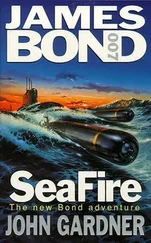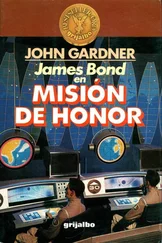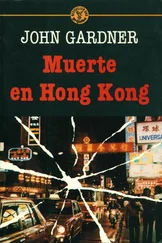John Gardner - Icebreaker
Здесь есть возможность читать онлайн «John Gardner - Icebreaker» весь текст электронной книги совершенно бесплатно (целиком полную версию без сокращений). В некоторых случаях можно слушать аудио, скачать через торрент в формате fb2 и присутствует краткое содержание. Жанр: Старинная литература, на английском языке. Описание произведения, (предисловие) а так же отзывы посетителей доступны на портале библиотеки ЛибКат.
- Название:Icebreaker
- Автор:
- Жанр:
- Год:неизвестен
- ISBN:нет данных
- Рейтинг книги:4 / 5. Голосов: 1
-
Избранное:Добавить в избранное
- Отзывы:
-
Ваша оценка:
- 80
- 1
- 2
- 3
- 4
- 5
Icebreaker: краткое содержание, описание и аннотация
Предлагаем к чтению аннотацию, описание, краткое содержание или предисловие (зависит от того, что написал сам автор книги «Icebreaker»). Если вы не нашли необходимую информацию о книге — напишите в комментариях, мы постараемся отыскать её.
Icebreaker — читать онлайн бесплатно полную книгу (весь текст) целиком
Ниже представлен текст книги, разбитый по страницам. Система сохранения места последней прочитанной страницы, позволяет с удобством читать онлайн бесплатно книгу «Icebreaker», без необходимости каждый раз заново искать на чём Вы остановились. Поставьте закладку, и сможете в любой момент перейти на страницу, на которой закончили чтение.
Интервал:
Закладка:
For
Peter Janson-Smith
ICEBREAKER
John Gardner

ACKNOWLEDGMENTS AND AUTHOR’S NOTE
I would like to thank those who gave invaluable assistance in the preparation of this book. First, to my good friends Erik Carlsson and Simo Lampinen who put up with me in the Arctic Circle. To John Edwards who suggested that I go to Finland, and made it possible. To Ian Adcock, who did not lose his temper, but remained placid, when, during a cross-country ride in northern Finland – in early February 1982 – I took him, not once, but three times, into snowdrifts.
My thanks also to that diplomat among Finnish gentlemen, Berhard Flander, who did the same thing to me in a slightly more embarrassing place – right on the Finnish-Russian border. We both thank the Finnish army for pulling us out.
Acknowledgments would not be complete without reference to Philip Hall, who has given me much support throughout.
John Gardner
1983
1
THE TRIPOLI INCIDENT
The Military Trade Mission Complex of the Socialist People’s Republic of Libya is situated some fifteen kilometres south-east of Tripoli. Set close to the coast, the Complex is well-hidden from prying eyes, screened on all sides by sweet-smelling eucalyptus, mature cypresses, and tall pines. From the air it might easily be taken for a prison. The kidney-shaped area is enclosed by a boundary of three separate, six-metre-high cyclone fences, each topped by a further metre of barbed and electrified wire. At night, dogs roam the runs between the fences, while regular patrols, in Cascavel armoured cars, circle outside the perimeter. The buildings within the compound are mainly functional. There is a low barracks, constructed in wood, for the security forces; two more comfortable structures act as ‘hotels’ – one for any foreign military delegation, the other to house their Libyan counterparts.
Between the ‘hotels’ stands an imposing, single-storey block. Its walls are over a metre thick, their solidity disguised by the pink stucco finish and an arched, cloistered façade. Steps lead to a main door, and the interior is cut down the centre by a single corridor. Administrative offices and a radio room extend to left and right of this passage which ends, abruptly, at a pair of heavy, high doors leading to a long, narrow room, bare but for its massive conference table and chairs, together with facilities for showing films, VTR, and slides.
There are no windows in this, the most important room of the Complex. Air conditioning maintains an even temperature, and a small metal door at the far end, used by cleaners and security personnel, is the only other entrance.
The Military Trade Mission Complex is used about five or six times a year, and the activities within are constantly monitored – as best they can be – by the intelligence agencies of the Western democracies.
On the morning it happened there were, perhaps, one hundred and forty people working within the compound.
Those in the capitals of the West who keep a weather eye on Middle Eastern events knew a deal had been struck. Although the likelihood of an official statement remained minimal, eventually Libya would receive more missiles, aircraft, and assorted military hardware to swell its already well-stocked arsenal.
The final session of the negotiations was to begin at nine-fifteen, and both parties stuck rigidly to protocol. The Libyan and Soviet delegations, each consisting of around twenty people, met in front of the pink stucco building, and, after the usual cordial greetings, made their way inside and down the corridor to the high doors, which were opened, on their well-oiled, noiseless hinges by two armed guards.
About half of the two delegations had already advanced into the room when the whole phalanx halted, rooted in shock by the sight that met their eyes.
Ten identically dressed figures formed a wide crescent at the far end of the room. They wore combat jackets and grey denim trousers tucked into leather boots. Their appearance was made more sinister by the fine camouflage netting which covered their faces and was held in place by black berets, each of which carried a polished silver badge. The badge was that of a death-head above the letters NSAA, the whole flanked by lightning runes.
Incredible, for Libyan officers had checked the room less than fifteen minutes before the two delegations arrived outside the building.
The ten figures assumed the classic firing posture – left legs forward, bent at the knee, with the butts of machine pistols or automatic rifles tucked hard into their hips. Ten muzzles pointed towards the delegates already in the room, and at the remainder in the corridor outside. For a couple of seconds the scene was frozen. Then, as a wave of chaos and panic broke, the firing started.
The ten automatic weapons systematically hosed the doorway with fire. Bullets chewed through flesh and bone in a din magnified by the enclosed surroundings.
The burst of fire lasted for less than a minute, but when it stopped, all but six of the Soviet and Libyan delegates were either dead or fatally wounded. Only then did the Libyan troops and security officers go into action.
The assassination squad was exceptionally disciplined and well-trained. The fire fight – which lasted for some fifteen minutes – caught only three of the intruders while they remained in the room. The remainder escaped through the rear entrance, taking up defensive positions within the compound. The ensuing running battle claimed another twenty lives. At the end, the whole ten-man team lay dead with its victims, like pieces from some bizarre jigsaw puzzle.
At nine o’clock GMT the next morning, Reuters received a message by telephone. Within minutes the text was flashed to the media around the world.
The message read:
In the early hours of yesterday morning, three light aircraft, flying low to escape radar detection, cut their engines and glided in over the well-guarded Military Trade Mission Complex just outside Tripoli, the capital of the Socialist People’s Republic of Libya.
An Active Service unit of the National Socialist Action Army landed, undetected, by parachute, within the grounds of the Complex.
Later in the day, this unit struck a blow for International Fascism by executing a large number of people engaged in furthering the spread of the evil Communist ideology, which remains a threat to world peace and stability.
It is with pride that we mourn the deaths of this Active Service unit while carrying out its noble task. The unit came from our élite First Division.
Retribution for fraternisation, or trade, between Communist and non-Communist countries, or individuals, will be swift. We shall cut away the Communist bloc from the remainder of the free world.
This is Communiqué Number One from the NSAA High Command.
At the time, it struck nobody as particularly sinister that the arms used by the NSAA group were all of Russian manufacture: six Kalashnikov RPK light machine guns and four of the RPK’s little brothers – the light, and very effective, AKM assault rifle. Indeed, in a world well used to terrorism, the raid itself was one headline among many for the media, who put the NSAA down as a small group of Fascist fanatics.
A little under a month after what came to be known as ‘the Tripoli Incident’, five members of the British Communist Party held a dinner to entertain three visiting Russian Party members, who were on a goodwill mission to London.
The dinner was held in a house not far from Trafalgar Square, and coffee had just been served when the ringing of the front doorbell called the host from the table. A large amount of vodka, brought by the Russians, had been drunk by everybody present.
Читать дальшеИнтервал:
Закладка:
Похожие книги на «Icebreaker»
Представляем Вашему вниманию похожие книги на «Icebreaker» списком для выбора. Мы отобрали схожую по названию и смыслу литературу в надежде предоставить читателям больше вариантов отыскать новые, интересные, ещё непрочитанные произведения.
Обсуждение, отзывы о книге «Icebreaker» и просто собственные мнения читателей. Оставьте ваши комментарии, напишите, что Вы думаете о произведении, его смысле или главных героях. Укажите что конкретно понравилось, а что нет, и почему Вы так считаете.











